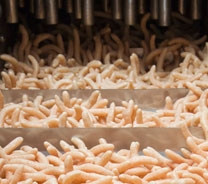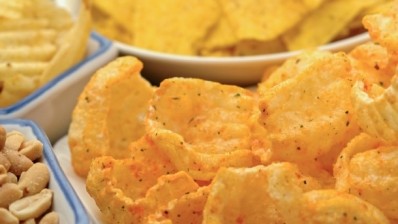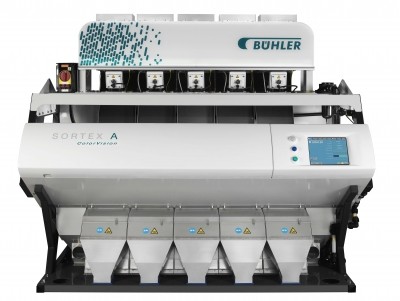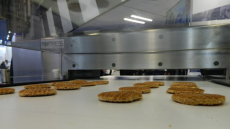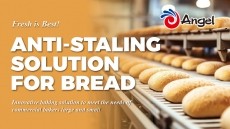Bühler: Ditch oil for hot air to slash snack fat

Most extruded snacks on the market are expanded in hot oil and typically contain between 20-30% fat.
Scott Vallette, regional director of EMEA at Bühler Aeroglide USA, said industry could dramatically reduce this fat content with a simple switch to hot air expansion.
“Using hot air to expand snack pellets does not involve any fat. The only fat is the natural inherent fat in the pellet, which I’m calling practically zero. The fact you then put seasoning on the product after you’ve expanded it means you have control of how much fat you add – you could add 3%, 5% or even 10%. There are some manufacturers doing it with very little fat,” he told BakeryandSnacks.com.
“One of the reasons hot air is being pushed is because it’s a healthy alternative,” he said.
Speaking to attendees at ProSweets’ 2015 Snack Technology conference in Cologne this week, Vallette said hot air expansion was a simple replacement to oil frying. The production technique replaces the frying stage with jet blasts of extremely hot air (between 190°C and 300°C) that are directed towards the snack pellets at a perpendicular angle to create uniform expansion.
Tackling childhood obesity beyond ‘lip service’
However, he said few snack makers had turned away from traditional oil frying and alternative production methods like hot air expansion remained very niche.
“I think frankly the consumer still prefers the fried product. Snacking has its particular place in the Western world – the mindset is that a snack is a luxury indulgence and so it’s all about the flavor,” he said.
But, as childhood obesity rates soared and certain fat tax laws were rolled out in countries like Mexico and Poland, Vallette said alternatives to frying would become increasingly important and healthy variants had started to gain some traction with consumers.
Healthy snacking, he said, was on the rise in Europe – set to increase 6% per year between 2014 and 2019, according to the European Snack Association (ESA).
“Two years ago you were seeing a new product come in but disappear; now we’re seeing a lot more prevalence of healthier baked snacks… Most major snack processors are trying to come out with healthier snacks and I’d say until very recently all of that has been lip service.”
Better for business too…
Vallette said switching to hot air expansion enabled innovative new product development along with better margin controls.
Hot air expansion, for example, enabled companies to use alternative oils for different flavors, like avocado oil – a product that wouldn’t be fit for frying. In addition, snack makers could easily fortify the product with vitamins because the frying step was removed.
“Another secondary benefit is the savings of the oil cost. Industrial fryers typically hold a lot of oil but you need to replace that oil constantly. It depends on production and the types of oils, but it is significant numbers on oil you’d be spending,” he said. The capital investment of a hot air expansion line versus an oil fryer was lower, he said, because of these large amounts of oil.
Warning: Testing needed
However, Vallette warned that hot air expansion would not work for every snack pellet. “Just because your product works in oil, doesn’t mean it works in air.”
Certain shapes, for example, would not expand properly using hot air, he said. “A long hollow shape is the wrong application for this technology because the center won’t be expanded like the outer part.”
Pellets had to be shaped in a way that enabled air to reach all parts of the product, he explained. In addition, it was important to use hot air lines that had a very rapid transfer and balance of air to improve the uniformity of the end product, he said.
